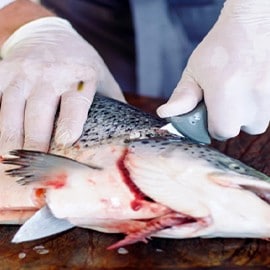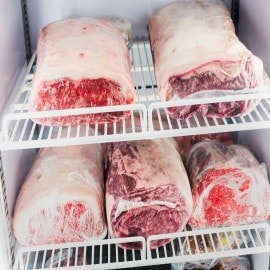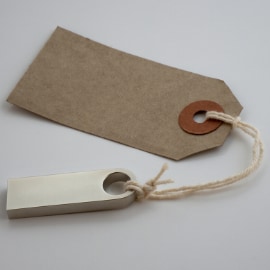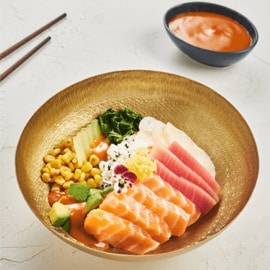
Food poisoning outbreaks can spell disaster and lead to the downfall of any business. Thankfully, restaurateurs can mitigate such risks by implementing safety protocols and cross-contamination prevention techniques in their day-to-day operations. How should you handle food properly? What’s the best way to store ingredients? How can you avoid diner complaints because of food quality? Find the answers in this guide.
What Is Cross-Contamination?
Cross-contamination is the unintentional transfer of harmful bacteria or other microorganisms from one substance to another. This usually leads to adverse repercussions, including food poisoning.
The movement can happen from one food to another, utensils, cutting boards, or storage containers. Raw meat, poultry, eggs, and seafood are most prone to contamination. The risk also increases when handling uncooked and prepared food at the same time.
How to Avoid Cross-Contamination in the Kitchen
Teach your restaurant staff about these cross-contamination techniques to keep your kitchen clean and safe.

1. Check the delivery temperature
According to the Department of Health of the Philippines (DOH), food handlers should never leave perishables unrefrigerated for more than two hours. So, considering the uncertainty of conditions during transport, you must always inspect the quality of your produce and other ingredients upon delivery. The DOH suggests an internal temperature of 5°C or lower for goods with a short shelf-life.
Remember: inadequately chilled items allow bacteria to grow faster. If ever you receive room-temperature products, do not hesitate to return them to the source and ask for a refund. And take this as a sign to replace your supplier! This will teach your staff that using fresh ingredients is nonnegotiable in your kitchen.

2. Keep Toxic Chemicals away from Food
Avoid keeping your cleaning and sanitation supplies near food or in the kitchen. Any accidental leakage, especially into raw ingredients, can lead to contamination, severe injuries, and revocation of permits. You can prevent these by designating a storage space for toxic chemicals and harmful products. It’s best to keep them in a utility closet with a locked door – far from heat sources and chilling equipment. And never near your guests!
You should also delegate a cleaning team daily, assign them to specific areas (FOH or BOH), and furnish them with restaurant cleaning checklists. Then, conduct safety training regularly so your team knows what to do during emergencies.

3. Avoid floor-level storage of ingredients.
Hazardous microorganisms pose a significant risk on commercial kitchen surfaces, including the floors. As such, strict organization protocols and storage systems are crucial for food safety. The general rule is to place products, ingredients, and containers on a raised platform or shelf at least six inches above the ground.
This buffer prevents cross-contamination and reduces the threat of insects or rodents damaging packaged products, like Knorr Potato Flakes and powdered seasonings. More importantly, this setup allows your team to clean and sanitize the floor without compromising pantry supplies.

4. Keep storage spaces well-maintained.
Practicing food safety also involves providing ample storage space and allocated areas for your supplies. Then, you must follow this up with these maintenance measures:
- Keep all storage zones clean and dry.
- Wipe spills and leaks immediately.
- Leave six-inch spaces between products and walls and a 12-inch gap from the ceiling.
- Group similar ingredients and products for easy inventory management.
- Ensure your team follows proper storage instructions for produce or prepared dishes.
- Maintain the correct temperature for walk-in freezers (-18°C to -22°C), reach-in refrigerators or chillers (4°C or below), and dry supply rooms or pantries (10°C to 22°C).
- Repair cracks, crevices, and access points that don’t shut tightly to avoid pests.

5. Follow the FIFO system.
When storing supplies, practice the first-in, first-out (FIFO) method by putting older products in front or on top so you see them first. This guarantees the consumption of earlier purchased items with shorter shelf lives before newer ones. Such an inventory management system will also help you maintain kitchen efficiency, reduce spoilage, and avoid unnecessary or excessive procurement of products.

6. Store raw meat, poultry, fish, and seafood separately.
One of the quickest ways to contaminate cooked food is by storing them under or near raw proteins in the chiller. Just imagine all the meat juices that can drip or seep into the containers and transfer bacteria. Big no-no!
Instead, you should store meat, poultry, fish, and seafood in a separate freezer. If this is not feasible, follow this top-to-bottom order: whole fish, whole pork and beef, ground meat and fish, then poultry at the bottom. Keep everything tightly sealed (vacuum bags help!), especially when taking them out or preparing them to thaw.

7. Label everything clearly.
Make it an SOP to label food clearly and correctly. Include the name of the item, its brand, delivery date, prep time, and expiration details. Also, use only food-grade and sanitized labels, markers, and tapes. This practice allows your staff to separate ingredients, raw food, and cooked dishes more efficiently.
Cross-Contamination Prevention Dos and Don’ts

Preventing cross-contamination in the kitchen is not a one-shot deal. You need to practice these tips religiously and remind your team to do the same. Consider printing copies of this table, sharing them with all staff members, and posting some in key areas.
-
DO'S DONT'S - Keep raw ingredients away from prepared or cooked food.
- Keep raw ingredients away from prepared or cooked food.
- Place cooked meats above raw meat in the chiller.
- Use the same knife or scissors for cutting raw and prepared food.
- Cover and protect food from pests, especially flies and mosquitoes.
- Reuse disposable food containers.
- Color-code probe thermometers for raw food and cooked items.
- Forget to follow proper waste management practices.
- Use food-safe bags and packaging for storage
- Replace packaging or rebottle cleaning supplies.
- Wear clean and appropriate clothing (uniform, aprons, hairnets, etc.).
- Neglect proper personal hygiene practices (groomed nails, hair, etc.).
Proper food handling and storage practices are essential in safeguarding against foodborne illnesses. Stay proactive and follow these tips to prevent cross-contamination in your kitchen. But don't stop there! Offer safety and sanitation training to your team and make sure they follow HACCP guidelines from the start to the end of their shift.


